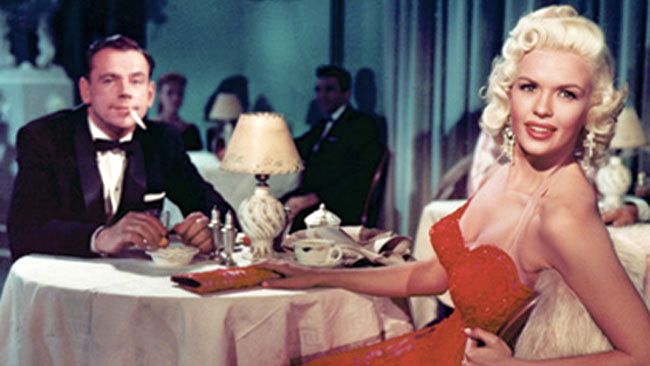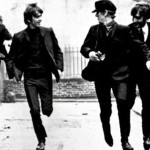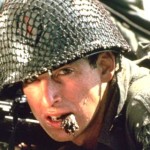
Fox’s “Jayne Mansfield Collection” celebrates an artist whose bold films of the mid-’50s have mostly faded from cinematic consciousness — obscured by lesser movies that followed and the hangover from an unfair reputation.
That artist was Frank Tashlin, the crazy-cool director of “The Girl Can’t Help It” and “Will Success Spoil Rock Hunter?” Those two films, by far the best made by the cartoonist-turned-director — and by his star Jayne Mansfield — finally arrive on DVD in all their eye-popping! color-bursting! va-va-voom! widescreen glory. Mansfield’s movies were all about sex, of course. The actress’ enormous breasts, tiny waist and platinum-blond hair brought her prefab fame to rival Marilyn Monroe’s. But Tashlin, a hopped-up cross between Russ Meyer and Billy Wilder, was as obsessed with mass media as he was with massive mammaries.
The director “was the supreme commentator on pop culture in the 1950s,” says film historian Dana Polan. In the ’60s, Andy Warhol served up social commentary via an iconic Monroe; Tashlin’s muse was Mansfield, whom he deployed in these films as a torpedo-chested “cartoon of femininity.”
“The Girl Can’t Help It” (1956) was Mansfield’s first feature under her contract with Fox. The studio signed the self-promoting Texan partly as insurance against loss of the increasingly unstable Monroe. (Mansfield’s grim story is capably told in the set’s extra feature “Blonde Ambition,” an hourlong “Biography” docu.)
Tashlin worked with two loads of dynamite on “Girl”: his female star and the newborn craze of rock ‘n’ roll. The film features mostly uncut performances by such greats as Little Richard, Eddie Cochran and Gene Vincent — and by forgottens such as the accordion-wielding the Three Chuckles (they rock, go figure).
Little Richard stands and delivers at an upright piano, as raw and sexy as America feared. Vincent performs as if in an R.E.M. trance. Fats Domino beams like a proud father. No one in 1956 knew rock ‘n’ roll was here to stay — the musicians play with the joy and energy of explorers.
Tashlin became known as an artist whose animated cartoons (notably for Warner Bros. and the Walt Disney Co.) looked like movies. And whose movies played like cartoons. (The director, unfortunately, is best remembered for the swarm of forgettable movies he went on to make with human toon Jerry Lewis.)
In “Girl,” Tashlin wasted no time in breaking the fourth wall, inspired perhaps by his old pal Bugs Bunny. The movie begins with star Tom Ewell stiffly addressing the audience, in drab old black and white. He snaps his fingers, and the image rolls out to CinemaScope dimensions, the screen suddenly saturated with cartoonish colors.
Ewell plays a washed-up music agent trying to make a pop star out of a gangster’s talentless girlfriend (Mansfield). “I just want to be a wife,” she coos to the agent, who is soon torn between love of his unbroken limbs and his lust.
DVD commentator Toby Miller ponders the treatment of Mansfield — is it sexism or satire when she plays a scene holding two milk bottles in front of her breasts? Unfortunately, Miller’s commentary is nod-off academic, a party-pooping contrast to the high-energy happenings onscreen. But credit the NYU prof for calling Little Richard “one of the truly great figures of our time.”
Over on “Will Success Spoil Rock Hunter?” commentator Polan gets it. He’s deeply academic as well but finds so much food for thought in the comedy you’d think he’s chewing on “Ulysses.” Polan makes the case for Tashlin’s film as a brilliant, relentlessly cynical satire of America in the Eisenhower era — “this artificial space of the 1950s.”
Mansfield gets top billing and does fine work, but the real star is Tony Randall. The 1957 movie skews decidedly male, set in “the world of the yes men” — where corporate eunuchs scurry about trying to salvage some manhood. “Freudinism is in the air,” Polan declares as the titular hero fails to keep his pipe lit, just after selling his soul to the company.
“Rock” follows Manhattan ad exec Rockwell Hunter (Randall) as he tries to talk vapid Hollywood queen Rita Marlowe (Mansfield) into making a lipstick endorsement. The wiggly nebbish somehow becomes “Lover Boy,” an overnight media sensation whom the star passes off to the world as her new love.
Tashlin amuses himself with attacks on Madison Avenue: As the opening credits roll, we get “Saturday Night Live”-like parodies of TV commercials in which the products backfire, baring the pitchmen’s lies. Gags about product placements coexist with the movie’s real product placements. At one point, actor Randall steps out of character to convince the audience that television, with its tiny screens and gray images, is no match for the sweep of CinemaScope. It’s just another pitch. Tashlin, too, is not to be trusted.
Both movies look terrific on DVD, with transfers so vivid and color-rich you’ll swear it’s Toontown! “Rock” rolls in the original 4.0 audio. “Girl” comes in 2.0 stereo, as does the third film in the set, the pedestrian Western spoof “The Sheriff of Fractured Jaw.” All three were CinemaScope titles with color by De Luxe; they unspool here at 2.35:1.
In addition to the Mansfield documentary, there is a newsreel about the actress visiting Washington and a generous set of lobby-card reproductions. The boxed set retails for $49.98; titles are not sold separately.
The real deal, Marilyn Monroe, showed her would-be rivals how to fire-blast a screen in Billy Wilder’s The 1959 cross-dressing classic just got a much-needed upgrade via MGM’s output deal with Sony.
The new transfer alone justifies stepping up to the “Collector’s Edition” (retail $24.96). Images come in a sweet-looking 1.66:1 anamorphic. Contrasts look great. The flatness from the 2001 version has been run out of town. Some identical wear remains, however, such as white splotches in the famous train station scene. Audio gets a fresh 5.1 mix that doesn’t call attention to itself.
There are two new documentaries about the production and the film’s legacy that include archival comments from Wilder and his writing partner I.A.L. Diamond. The first docu features color home movies of Monroe on location at the Del in San Diego. (Both half-hour films were directed by Mike Thomas.)
Much of the talk concerns Monroe’s erratic behavior, which bedeviled Wilder. Still, he said decades later, “If Marilyn was around today I would be on my knees, ‘Please let’s do it again.’ ” Star Tony Curtis tries to explain his comment that kissing Monroe was “like kissing Hitler.” In any case, he admits to being hugely turned on while filming their big make-out scene.
Also new to this edition is a lukewarm commentary that incorporates audio clips from Curtis and the late Jack Lemmon. The stars get the billing, but unfortunately most of the talking (and cackling) is done by screenwriters Lowell Ganz & Babaloo Mandel (“City Slickers”). They watch the film with Diamond’s son, Paul. A lot of material is repeated across the extras.



Leave a Reply